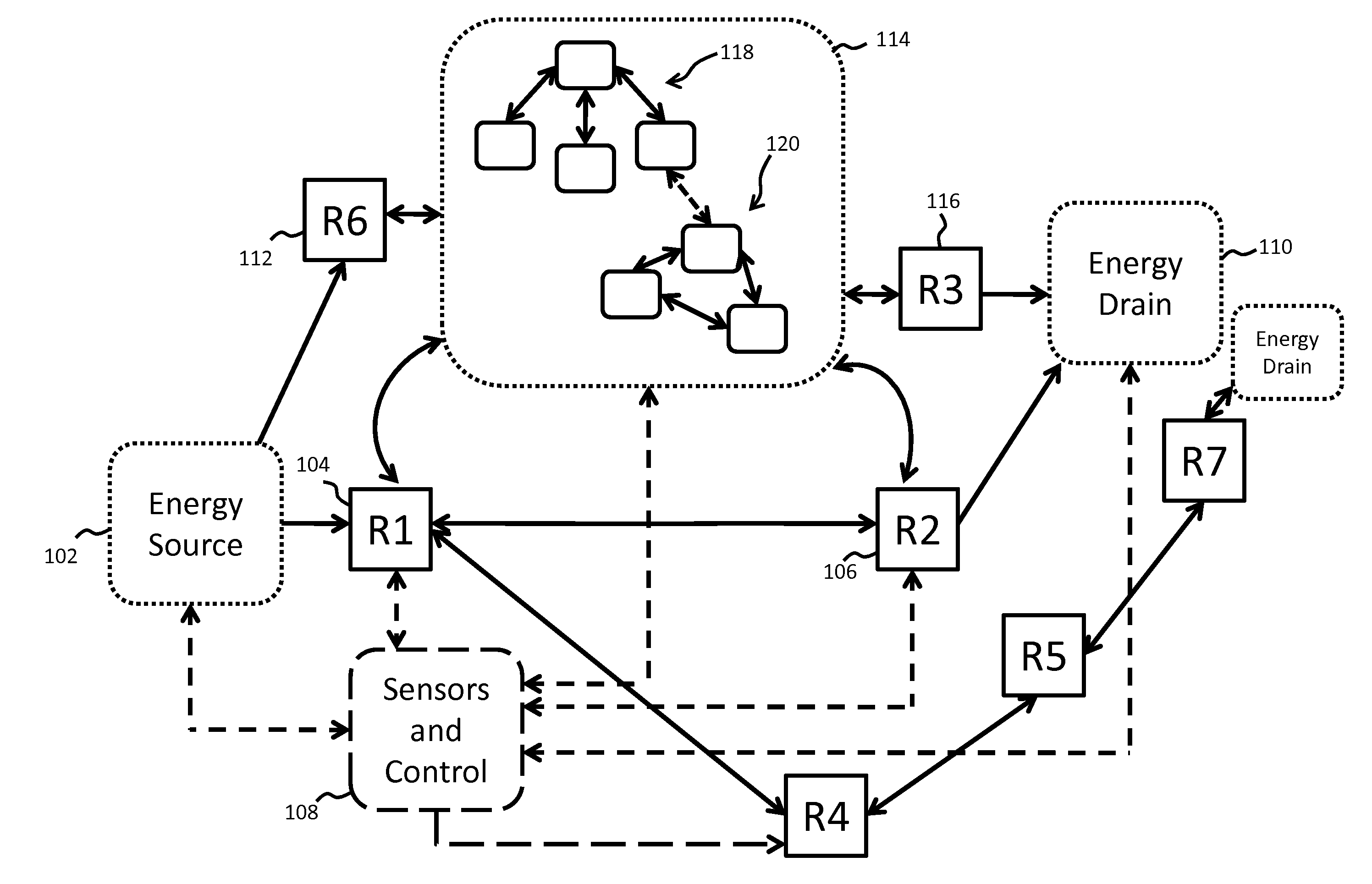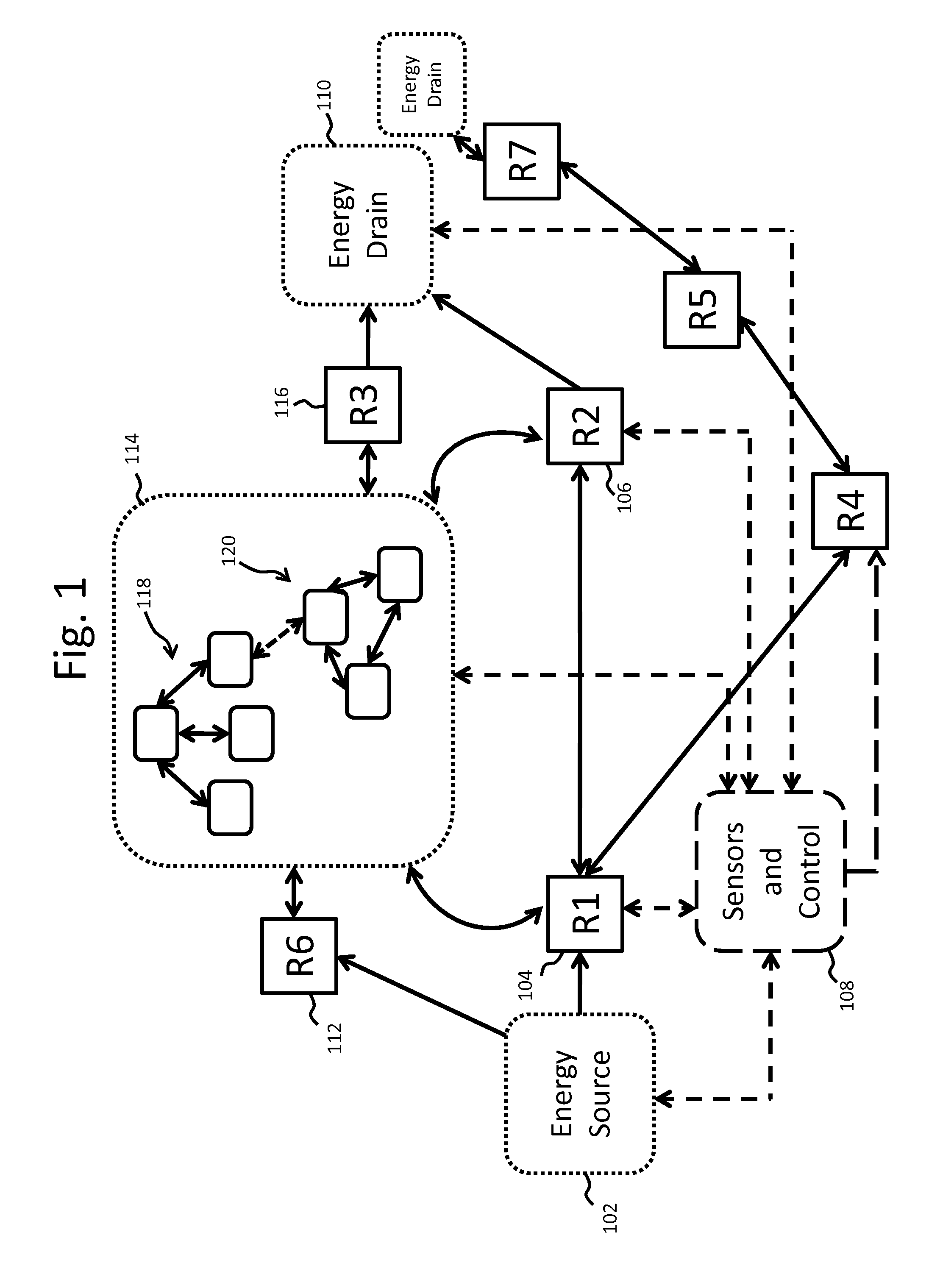Tunable wireless power architectures
a wireless power architecture and wireless technology, applied in the direction of charging stations, cores/yokes, transportation and packaging, etc., can solve the problems of reducing the efficiency of energy transfer, affecting the efficiency of wireless energy transfer, and limiting the prior art wireless energy transfer systems
- Summary
- Abstract
- Description
- Claims
- Application Information
AI Technical Summary
Benefits of technology
Problems solved by technology
Method used
Image
Examples
example system embodiments
[0238]FIG. 24 shows an exemplary block diagram of a wireless energy transfer system in accordance with the present invention. The system in FIG. 24 includes a wireless energy source that transfers energy to at least one wireless energy capture device. The system comprises tunable source elements and tunable device elements capable of adjusting the energy transfer of the system. The adjustment of energy transfer may be used to control the amount of energy transferred to the device. The adjustment may be used to control the power delivered to the load under different loading conditions and different device positions / orientations relative to the source. The adjustment of energy transfer may be used to ensure that energy is transferred efficiently by reducing wasted or dissipated energy in the system elements due to excessive energy stored or flowing through the system elements.
[0239]The source of the system may comprise a tunable switching amplifier and a tunable impedance matching net...
PUM
 Login to View More
Login to View More Abstract
Description
Claims
Application Information
 Login to View More
Login to View More - R&D
- Intellectual Property
- Life Sciences
- Materials
- Tech Scout
- Unparalleled Data Quality
- Higher Quality Content
- 60% Fewer Hallucinations
Browse by: Latest US Patents, China's latest patents, Technical Efficacy Thesaurus, Application Domain, Technology Topic, Popular Technical Reports.
© 2025 PatSnap. All rights reserved.Legal|Privacy policy|Modern Slavery Act Transparency Statement|Sitemap|About US| Contact US: help@patsnap.com



